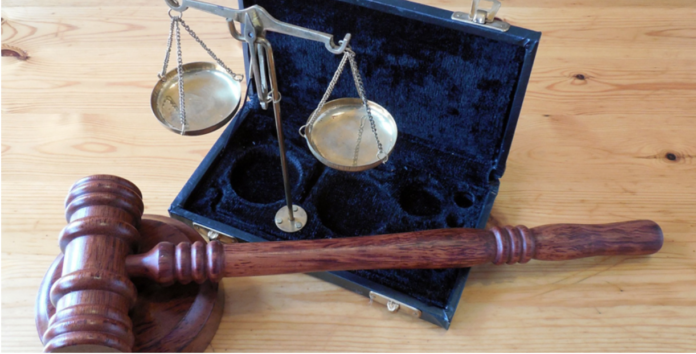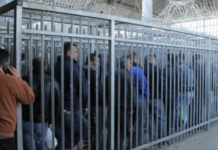The release of the largest-ever crime survey in New Zealand paints a picture of law and order issues dominated by white middle-class fears of crime rather than those actually suffering it.
“Victims are most likely to be aged between 19 to 29, Māori, never married, have moderate-to-high levels of psychological distress, lower life satisfaction ratings and lower feelings of safety.”
So it is young, brown, poor New Zealanders who are the victims of crime, yet the mainstream coverage of crime and the ever shrill screams for longer, harsher sentences originate from white middle-class suburbs frightened by the one-sided media coverage and enflamed by politicians wanting to appear tough on crime.
For poor, young and brown NZers to suffer most from crime to then be demonised and attacked by those who aren’t suffering most from that crime is an insult on top of injury.
It is the fear from old white middle-class NZ that drives the current war on crime debate while the poor, young and brown are both the victims and the punished. We see this in the prison stats, we see this in the victim stats.
There needs to be far more focus on a new type of justice system with healing and mercy as its core values rather than vengeance and anger.
How many more statistics do we need before we start listening?
First published on Waatea News.







What you have failed to even mention is that victims of crime are typically victimised by their “neighbours” and by that I mean, people who live in the same general area.
So someone living in Remuera will be burgled by someone in Remuera or surrounding suburbs. The same goes for Otara.
So all those young brown people living in Otara that are the victims of crime are likely to be the victims of other brown people.
This doesn’t invalidate your point, however it seems to me that you are slanting the dialogue by omitting this fact.
Tone deaf af
Martyn I think that the White middle class male of which group you and I are both representatives , is perfectly well aware that the victims of most violent crime are poor brown very young and female. They do not feel afraid for themselves, they deplore that the victims are who they are. You are as representative of the general sentiment on this as any of them. Embrace who you are and be a good one.
Cheers D J S
David Stone
The point is that people who have so much agency and opportunity are majorly white, and like to believe that they have attained these things because they are inherently better than brown people. That then reinforces their wish to keep all their advantages to themselves, and not share them fairly with brown people who wouldn’t benefit from them because they are in the ‘comfortables’ eyes, inferior. Therefore they feel no compunction to fund schemes to help brown people out of cycles of disadvantage.
These start with difficulties in childhood from immature parents under-resourced, and violence by word or deed may be frequent. Education in formal schooling and life skills may be absent, so inability to learn at school while imbibing bad learnings at home from poor role models, addictions, anger without restraint and no goal-setting for better times. Not a good start in life for the child, who grows up to parent as haphazardly as his/her own parents.
I quote from Wayne Mapp’s recent comment on Bowalley Road 21/5 Conceding Nothing – To The Undemanding Non-Voter –
https://bowalleyroad.blogspot.com/2020/05/conceding-nothing-to-undemanding-non.html?showComment=1589865323132#c7315988678700697298:
…The last twenty years covers virtually a whole generation. It seems to me that New Zealanders are essentially quite comfortable with the type of governments we have had over this period. In my lifetime, I would say the last twenty years has, in a relative sense, been a time of tranquility and general contentment. Obviously that is not to say everything is perfect, but for most people it has been pretty good.
Features include full employment (3 to 4% unemployment for most of the time), low inflation, reasonable growth, a reasonable spread of prosperity. Now of course I live in North Shore, which has nearly 10% of New Zealand’s population. This is an area where people generally feel pretty good. I know not all of New Zealand is like North Shore. Parts of South Auckland, but nowhere near all of it are in more difficult circumstances. The areas of deprivation are essentially Mangere, Manurewa, Otara and Papatoetoe. But Howick, Botany Downs, Pakuranga and Papakura are doing well. As you note, this is where a lot of aspirational and upwardly mobile immigrants live….
I fear for all of us ordinary (not wealthy but hopeful) citizens in coming years. But because brown people tend to be those who have relied on real, physical work and living simply – a part of society that has been disadvantaged by capitalistic and materialistic western society – they are in the worst position to cope with the technocratic solutions and the machine-minded, almost humanoids that have become numerous in society. Many are in government administration, belonging to the cult of ‘Efficiency and Cost-Effectiveness’. This is similar to the sly slogan of the Nazis ‘Work will make you Free’.
This is another pertinent quote from The Standard this time. https://thestandard.org.nz/open-mike-21-05-2020/#comment-1713843
Open Mike pat 14 21 May 2020 at 12:59 pm
“Unfortunately, for the last half-century, the prevailing political message in many countries has been that governments cannot – and therefore should not – actually govern. Politicians, business leaders, and pundits have long relied on a management creed that focuses obsessively on static measures of efficiency to justify spending cuts, privatization, and outsourcing.As a result, governments now have fewer options for responding to the crisis, which may be why some are now desperately clinging to the unrealistic hope of technological panaceas such as artificial intelligence or contact-tracing apps. With less investment in public capacity has come a loss of institutional memory (as the UK’s government has discovered) and increased dependence on private consulting firms, which have raked in billions. Not surprisingly, morale among public-sector employees has plunged in recent year”https://www.interest.co.nz/opinion/105135/mariana-mazzucato-and-giulio-quaggiotto-show-why-countries-embraced-proactive-state
So true… Will we finally learn the lesson?
You’d go well manning a telephone in a Labour branch with a policy agenda like that. I’m not mocking you but that’s how the change happens.
When I looked over all 10,000 Labour Party members, up until recently there was huge issues about whether or not a team like that could be a force for good inside our team of 5 million. And of course The Greens, National, Act, and NZFirst have to find there won niche inside this team of 5 million.
Yknow I may talk of being in government as being this one big organism but it isn’t really. Although the Ninth Floor of the beehive is like a brain and central nervous system resides where all the the decisions and orders and ideas happen once those decisions are made an organism reacts instantly where as in government you can have the most brilliant ideas in the world but some times the organs and apenditures of government don’t react at all. And this is where Labour members come in Yknow they’ve got to be as equally reactive as the there is inactivity from these Manchurian charlatans inside the government digging there heels, Yknow these do nothing Paula Redstock types hired to cut funding and services. The whole thing is riddled with these Redstock types Yknow and the whole place just needs to be shocked into moving again.
Hi Greywarbler
I imagine you are one of us as well. What I am not clear about is why you don’t see yourself as Martyn seems not to see himself as typical of your demographic. I think we all do really care, and want everyone to have as successful and happy a life as we do. Why do you and Martyn imagine yourselves to be superior white privileged males who are above the common mode of assumed superiority. Isn’t it exactly the same sentiment?
I have read many of your comments here and on Bowalley Road so I know that you are a thoroughly decent and fair minded person. I just think the vast majority of other white males are too.
D J S
Not the ones I talk to David Stone. The white ones quickly jump into superior mode and like the National Party for not wasting money on ‘the rest’ who are struggling. White males etc can’t be all lumped together, but there is an awful lot of complacency and self-satisfaction and an irritation with the strugglers who are like annoying mosquitoes. They would slap them like mosquitoes if they could. There is no desire to get to the heart of the matter, and give people what they need. And if you are trying to make me out as patronising, stick a sock in it, because I care and know about the reality and generally the strugglers are too busy surviving to stand objectively looking at their situation,; they cannot speak for themselves, when they ever do see things as clearly as I see them they are either speechless, in a rage or go quietly bitter and agitate for years for change. Luckily Maori have staunch people who reach positions of authority and have been able to prevail to some extent. Pakeha not so much.
By pushing this ‘trope’ helps perpetuate the belief that what is recorded ‘statistically’ is accurate.
Many of these stat’s of poor brown discriminated against people, mainly Maori & PI are more representative of “profiling” statistics. This is where the demographic is then divvied up into race, income,area and so on. Then spliced up again by highest user of specific services which may be weighted accordingly dependent on the purpose of the Statistics required to support the policy been promoted. And hey presto! PI and Maori are your target group for everything that is bad! FFS!
Self fulfilling prophecies.
Here’s the link where you can read for yourself what it actually says, rather then jumping to conclusions. (Not sure why I had to post, thought TDB may have bothered given the tone of the article)
https://www.justice.govt.nz/justice-sector-policy/research-data/nzcvs/resources-and-results/
Thanks G unit.
I suggest anyone who actually cares about the statistics bothers to read the actual reports because there is nothing in the reports that suggests that white middle class fear drives law and order. The least likely ethnic group to experience crimes across the board are Chinese for example.
I’d like to see where all the money is spent of projects too… and how effective it is.
Also the effect of drug and alcohol is not reported in the statistic I looked at.
If a person was not in active work or looking, and with psychological distress, it makes the person much more likely to be a victim… so how is our massive Meth problem contributing to that?
With smokes at $40 per pack (and considered essential services in lockdown, weird when the prisons are smoke free with zero issues) you really wonder how society is actually making things worse for these people by helping hook them on smokes, alcohol and drugs and then they become more likely to be victims of crimes themselves…
Pakeha and white middle classes are not even mentioned at all in the report I looked at, so how can they be driving the law and order they are invisible in the statistics?
Sadly like many things in NZ, headlines are now woke perceptions and politicised rather than a view to overall reductions of victims of crimes regardless of race/age/gender.
Instead of a focus in preventing all crimes in NZ, the focus seems to be on blaming others for it or stop people from reporting crimes. (aka 75% of crimes are unreported). Instead of focusing on the criminals, it is now acceptable for bloggers to just make up rubbish headlines and blame the victims or general public instead.
What percentage of the crimes reported are also around property/car crimes for insurance purposes and it would be good to look at crimes at a much deeper level. Someone stealing your car is different from murdering someone or putting them in hospital and if certain types of crimes are increasing then policy should be changing.
There is not enough details in violent crime for example, aka in domestic violence/robbery/violence which is more likely to be serious injury… what victims end up needing hospitals for physical injury, what victims need psychological help…. again you need this information to plan services ahead of time while trying to reduce the victims of crimes…
Here is an example of what is in there.
“Adults aged 20–29 years (37%) and 40–49 years (36%) were more likely to experience crime than the NZ average (30%), whereas adults aged 65 years and over (20%) were less likely to experience crime.
(aka pretty much even, the age brackets of victims of crime only 1% difference between 20- 29 and 40 -49 ages.)
Māori (38%) were more likely to be victims of crime and Chinese Adults (22%) were less likely to be victims of crime compared to the NZ average.
Analysis shows that Māori are younger and live in more deprived areas and these factors contribute to their higher likelihood of victimisation.
Adults who had never married or been in a civil union (36%) were more likely than the NZ average to experience crime, while those who were widowed (17%) were less likely.”
Other issues,
Adults with moderate (43%) or high (51%) levels of psychological distress were more likely to be victims of crime than the NZ average.
Adults who were not employed and not actively seeking work (43%) were more likely to experience crime than the NZ average, while retired people (25%) were less likely to experience crime.
Students were more than twice as likely (16%) than the NZ average to experience violent interpersonal crime.
Victims were injured in 56% of physical violence offences.
Over the last 12 months, 87,000 adults experienced over 250,000 offences committed by family members. (35%)
Pacific adults (2.4%) were half as likely as the NZ average (4.9%) to experience theft and damage offences.
Asian adults (3.5%) were less likely to experience theft and damage offences than the NZ average. Māori (7.8%) were more likely to be victims of theft and damage offences.
A quarter (25%) of all crime was reported to the Police over the last 12 months. (So 75% of crime is unreported).
The vast majority of sexual assaults (94%) were not reported to the Police.
Victims who experienced multiple incidents within the last 12 months experienced the majority (70%) of all crime incidents.
Adults more likely than the NZ average to be highly victimised were:
o young adults (aged 20 – 29)
o Māori
o living in a one parent household
o living in the most deprived areas
o experiencing high levels of financial pressure
o experiencing moderate to high psychological distress
o reporting low levels of life satisfaction and lower feelings
of safety.
Adults less likely than the NZ average to be highly victimised were:
o adults aged 65 years and over
o Asian adults
o living in a couple only household
o not experiencing financial stress
o not psychologically distressed
o reporting high levels of life satisfaction and high feelings
of safety.
Thanks for doing the homework saveNZ
It would be an interesting addition co know how many offenders are known to their victims and what the relationships are.
D J S
DJS: read the stats for yourself and don’t be so lazy.
Thanks save nz for all that work putting those listings. Some things come to mind.
1 The classifications are fairly open, many are the sort of stats that are good for the professionals to use the same down the years and check the differences for trends.
2 Being so wide they tend to blur the picture ie Adults over 65 having high feelings of safety. (Define what is meant and understood as well, when saying safety?)
3 ‘The vast majority of sexual assaults (94%) were not reported to the Police.’ The figure that the percentage is based on must be produced from computer modelling and should be acknowledged as such. Similarly, ‘The vast majority of sexual assaults (94%) were not reported to the Police.’
4 This needs further explanation: ‘Students were more than twice as likely (16%) than the NZ average to experience violent interpersonal crime.’
4 This is a flabby statistic: ‘Over the last 12 months, 87,000 adults experienced over 250,000 offences committed by family members. (35%)’ I suppose this includes parents who have smacked their kids, the famous civilising law that just creates criminals out of inadequately experienced parents. The mass figure sounds frightening, FGS split it up into soft, medium, serious. if it is to provide useful information.
I don’t think that Martyn’s heading is wrong. It seems to me he has extrapolated it from the report, knowing that this is not a new understanding. Probably a cynic has worked out the dismay rate for headline coverage – one pakeha affected by crime to a dozen strugglers or Maori say.
What Denny has said though is interesting and should be remembered. The way that stats are measured, of whom, by whom, when etc. makes a big difference to their relevance when compared to the whole population.
Thanks Greywarbler, but thank G unit, because he/she supplied the link
I really think it’s important not to revictimise victims and really think about how to prevent crime and think outside the box if needed. I’m tired of race related crime headlines aka
“White middle-class fear drives law & order in NZ”
Crime is defiantly a place that needs everyone to put down their interests and think calmly, take the woke out of it, work out what is going on and the factors leading to it, whether some parts are increasing and some are decreasing, the best way to prevent crimes and not have a massive mess of groups all fighting each other for their version of victimisation and funding.
Victims of crimes should be treated equally and they need to check of both discrimination and reverse discrimination.
My personal view is there is a lot of discrimination against Maori offenders in the justice system and it’s structural and possibly IT related as sentencing and prison becomes based on previous metrics of offending, which in NZ views of race and discrimination have (hopefully) significantly changed in the last decades.
Aka because Maori may have been discriminated against in NZ history, this is now creating a system that makes them more likely to show as recidivist offenders and thus our current system discriminates against them and skews the figures even more, it’s a downward spiral not helped by poor IT metrics.
Likewise because migrant numbers have been small in NZ in the past and it was hard to get into NZ to live, migrant offending was lower, while some crimes were virtually non existent here like bribery.
Times change but our justice is ignoring growing issues, when anybody in the world can get a visa here and they might not have good intentions and expand criminality – it’s pretty obvious that has happened with drugs in NZ as International gangs have expanded here.
Migrant metrics captured in computer programs from the past, are outdated, and migrants are treated as low risk offenders, offering lighter sentences and thus seemingly undermining and encouraging more crimes that we did not used to have in NZ aka money laundering, more drugs and corruption.
I heard that a significant amount of Maori are in prison for car related crimes like drink driving…. not sure if true, but sad that if that was the case that liquor was considered an essential service in lockdown and Thirsty Liquor stores are popping up across NZ to make the situation worse.
The justice system is a mess. Probation and sentencing is not consistent in NZ and there needs to be a non woke led change to rectify it and to help victims more and prevent criminals operating in NZ, especially those who don’t need to be here.
Comments are closed.